Optimum Installation of Sorptive Building Materials Using Contribution Ratio of Pollution Source for Improvement of Indoor Air Quality
Abstract
:1. Introduction
2. Performance of Sorptive Building Materials
3. Outline of CFD Analysis
3.1. Geometry and Conditions of Case
3.2. Numerical Model
3.3. Conditions of CFD Analysis
4. Results of CFD Analysis
4.1. Air Distribution of Object Space
4.2. Contribution Ratio of Each Pollution Source on Indoor Occupants
4.3. Change in Contribution Ratio per Indoor Pollution Source according to the Installation of Sorptive Building Materials
5. Conclusions
Acknowledgments
Author Contributions
Conflicts of Interest
Abbreviations
| CFD | computational fluid dynamics |
| CRP | contribution ratio of pollution source |
| AC | activated carbon |
| BLTSTC | boundary layer-type small test chamber |
References
- Wargocki, P.; Bakó-Biró, Z.; Clausen, G.; Fanger, P.O. Air quality in a simulated office environment as a result of reducing pollution sources and increasing ventilation. Energy Build. 2002, 34, 775–783. [Google Scholar] [CrossRef]
- Kosonen, R.; Tan, F. The effect of perceived indoor air quality on productivity loss. Energy Build. 2004, 36, 981–986. [Google Scholar] [CrossRef]
- Kavgic, M.; Mumovic, D.; Stevanovic, Z.; Young, A. Analysis of thermal comfort and indoor air quality in a mechanically ventilated theatre. Energy Build. 2008, 40, 1334–1343. [Google Scholar]
- Seo, J.; Kato, S.; Ataka, Y.; Chino, S. Performance test for evaluating the reduction of VOCs in rooms and evaluating the lifetime of sorptive building materials. Build. Environ. 2009, 44, 207–215. [Google Scholar]
- Seo, J.; Kato, S.; Ataka, Y.; Yang, J. Influence of Environmental Factors on Performance of Sorptive Building Materials. Indoor Built Environ. 2010, 19, 413–421. [Google Scholar] [CrossRef]
- Ataka, Y.; Kato, S.; Murakami, S.; Zhu, Q.; Ito, K.; Yokota, T. Study of effect of adsorptive building material on formaldehyde concentrations: Development of measuring methods and modeling of adsorption phenomena. Indoor Air 2004, 14, 51–64. [Google Scholar] [CrossRef] [PubMed]
- Hayashi, T.; Ishizu, Y.; Kato, S.; Murakami, S. CFD analysis on characteristics of contaminated indoor air ventilation and its application in the evaluation of the effects of contaminant inhalation by a human occupant. Build. Environ. 2002, 37, 219–230. [Google Scholar] [CrossRef]
- Gao, N.; Niu, J. Transient CFD simulation of the respiration process and inter-person exposure assessment. Build. Environ. 2006, 41, 1214–1222. [Google Scholar] [CrossRef]
- Bulińska, A.; Popiołek, Z.; Buliński, Z. Experimentally validated CFD analysis on sampling region determination of average indoor carbon dioxide concentration in occupied space. Build. Environ. 2014, 72, 319–331. [Google Scholar] [CrossRef]
- Hayashi, T.; Kato, S.; Murakami, S.; Zhu, S. Numerical analysis on pollution of inhaled air with chemical contaminant in Room (Part 8)—CFD analysis on contribution ratio of pollution source to inhaled air in a stagnant room. In Proceedings of The Society of Heating, Air-Conditioning and Sanitary Engineers of Japan, Tokyo, Japan, 10 August 2000; pp. 13–16.
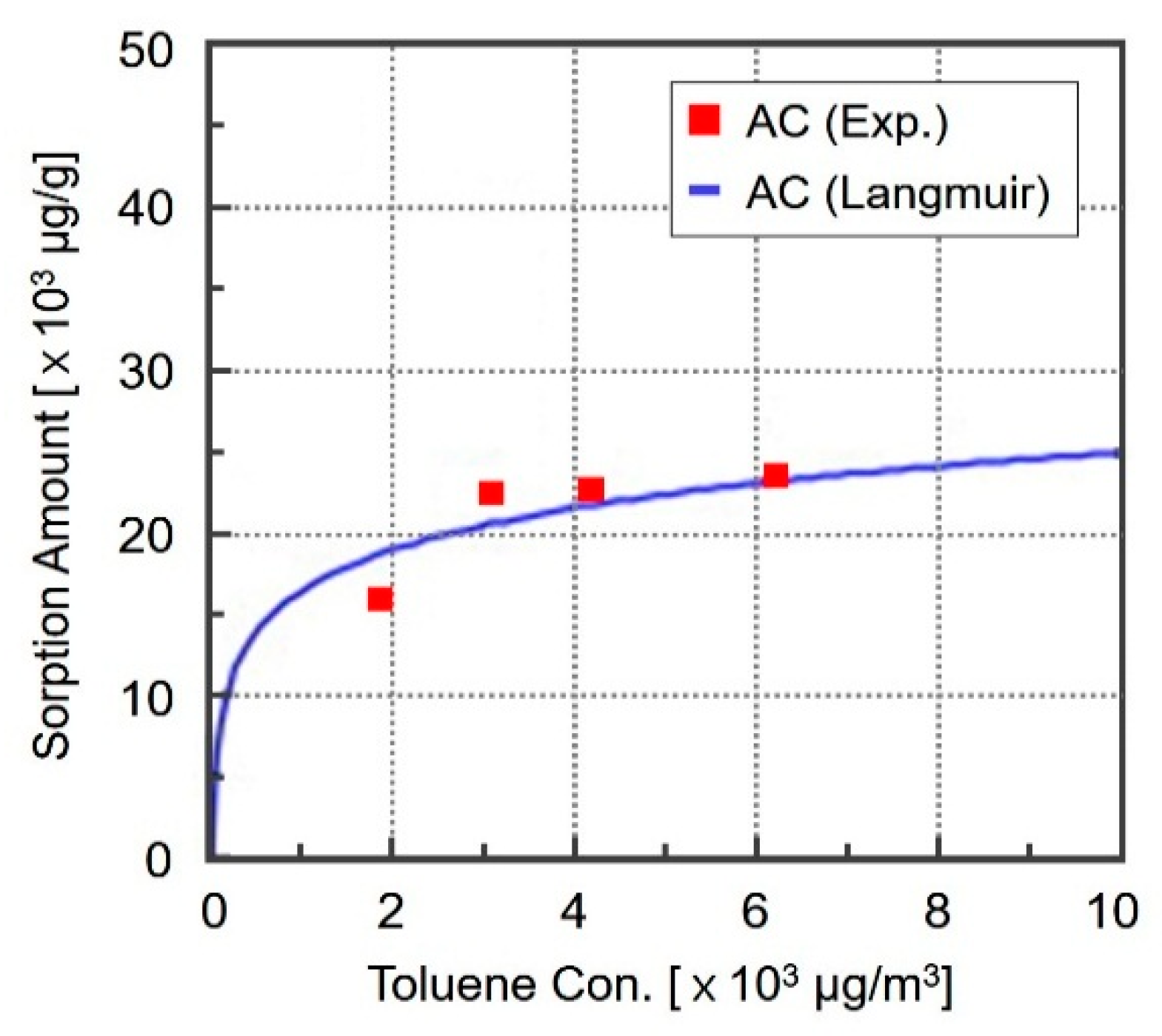
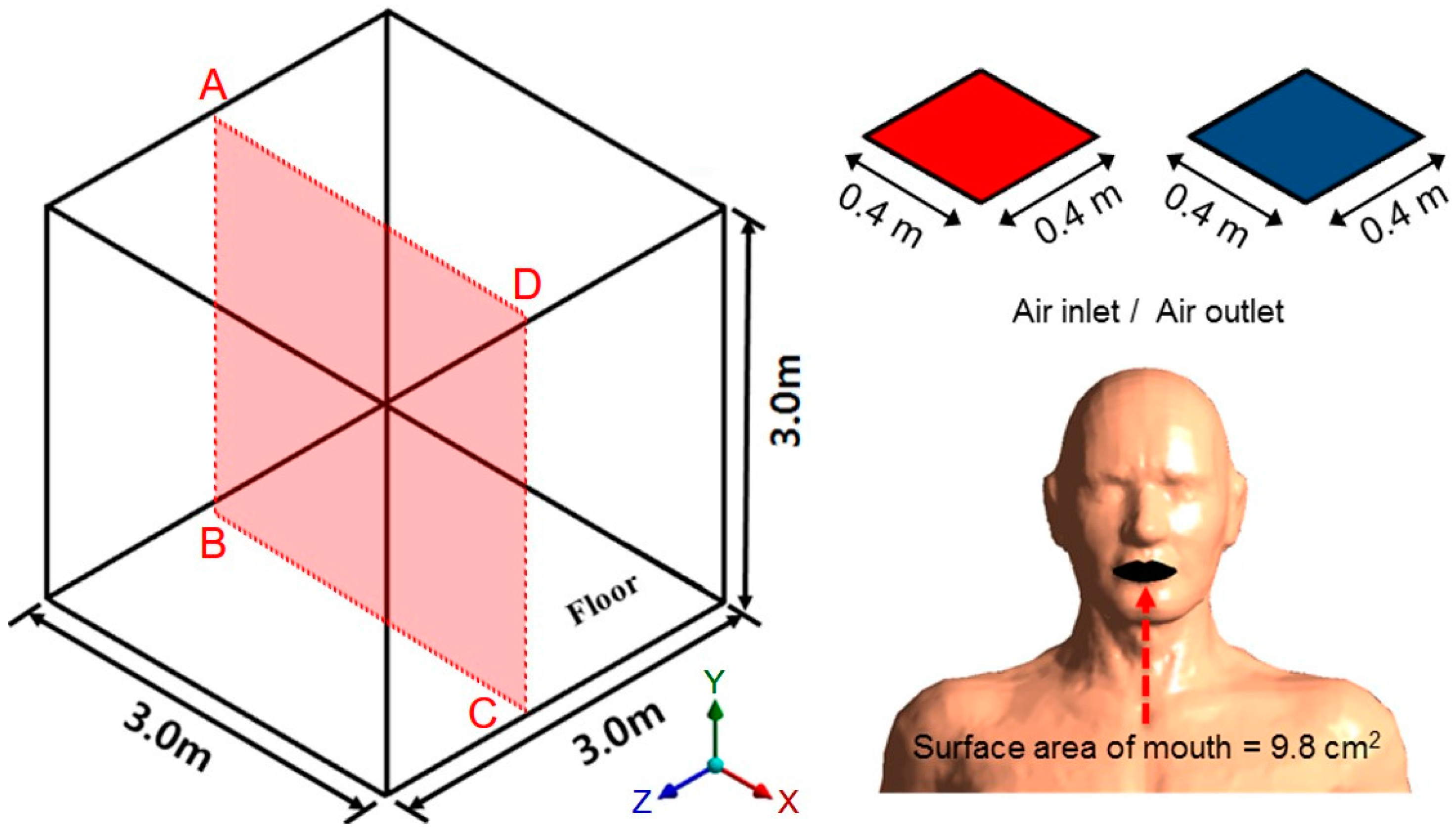

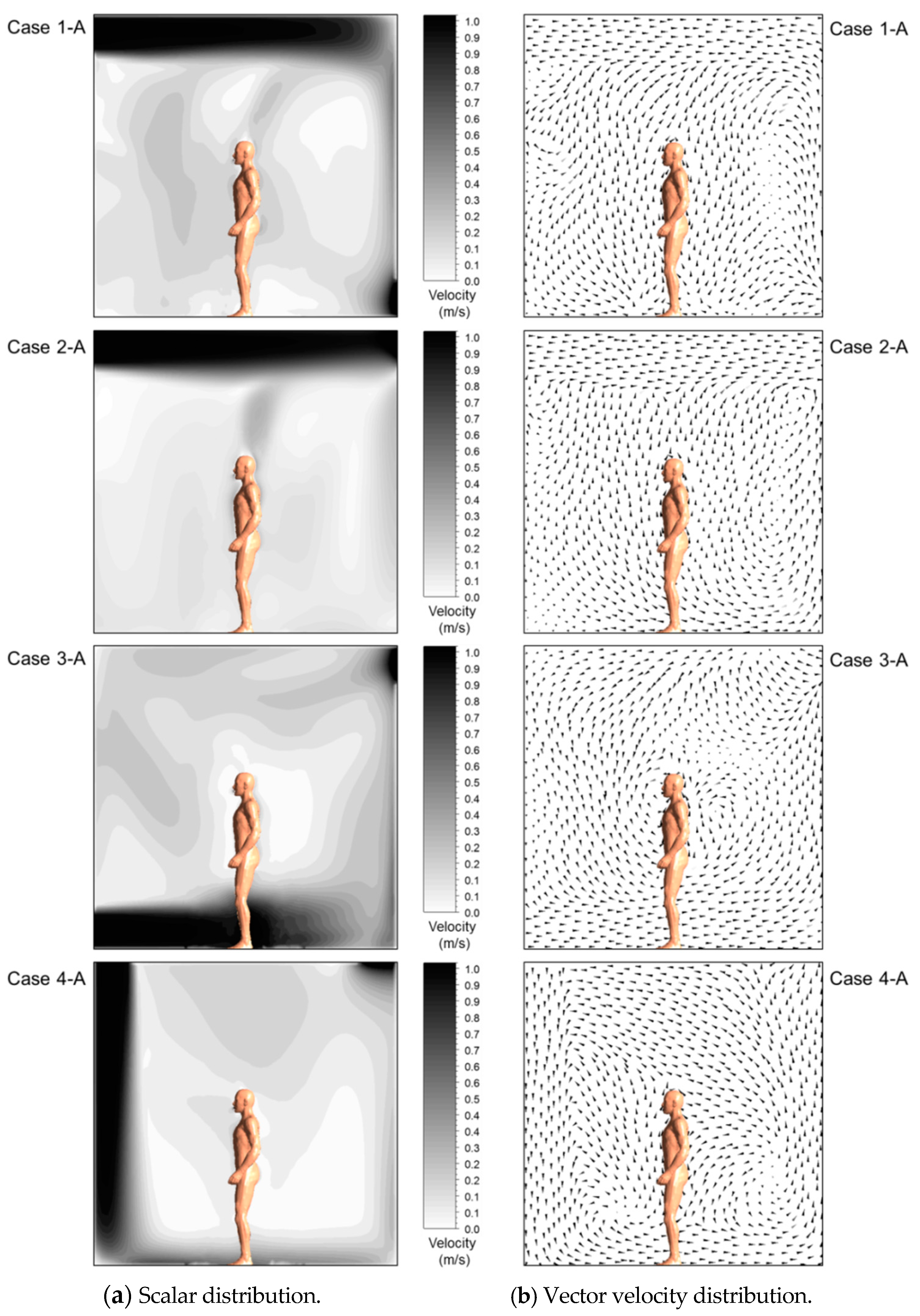
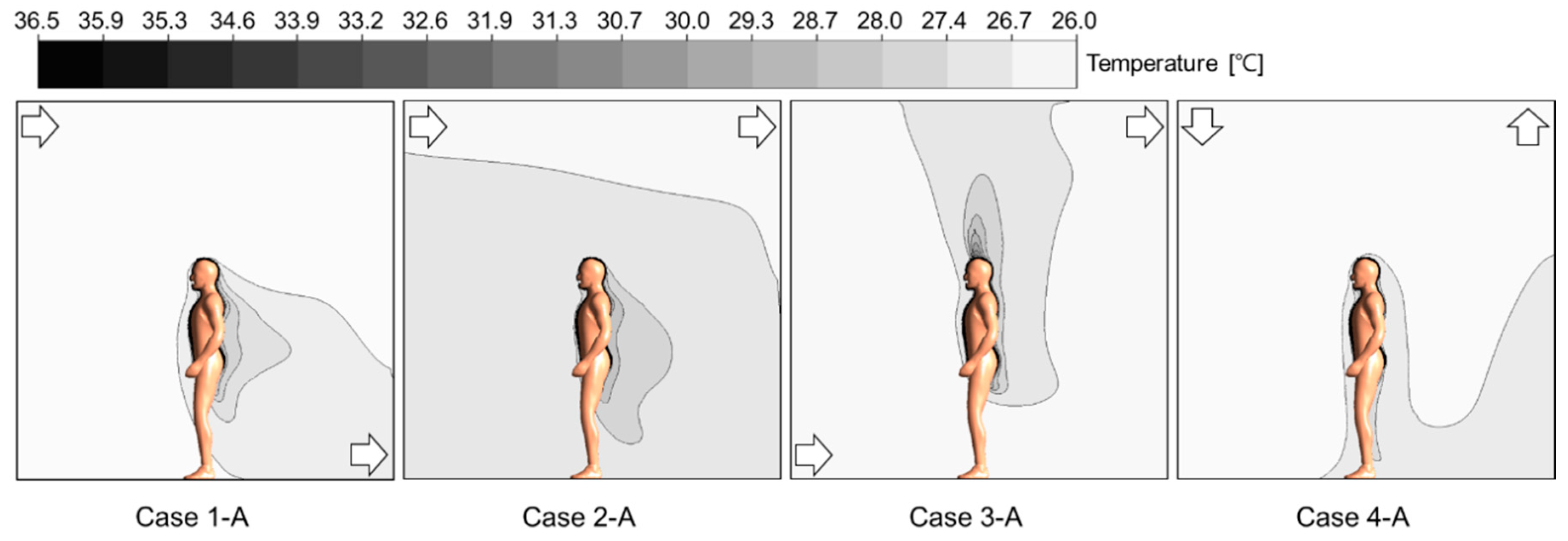
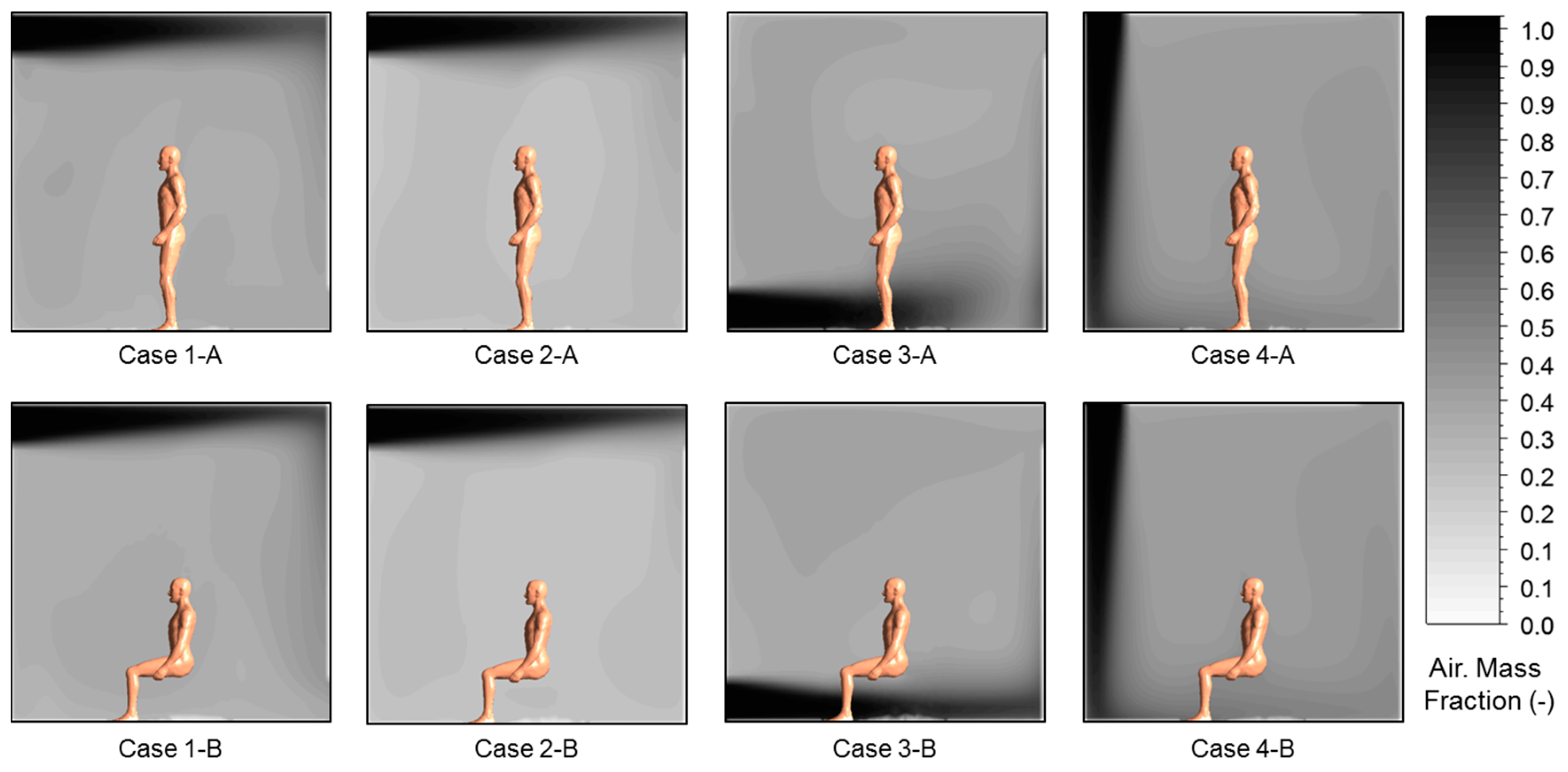
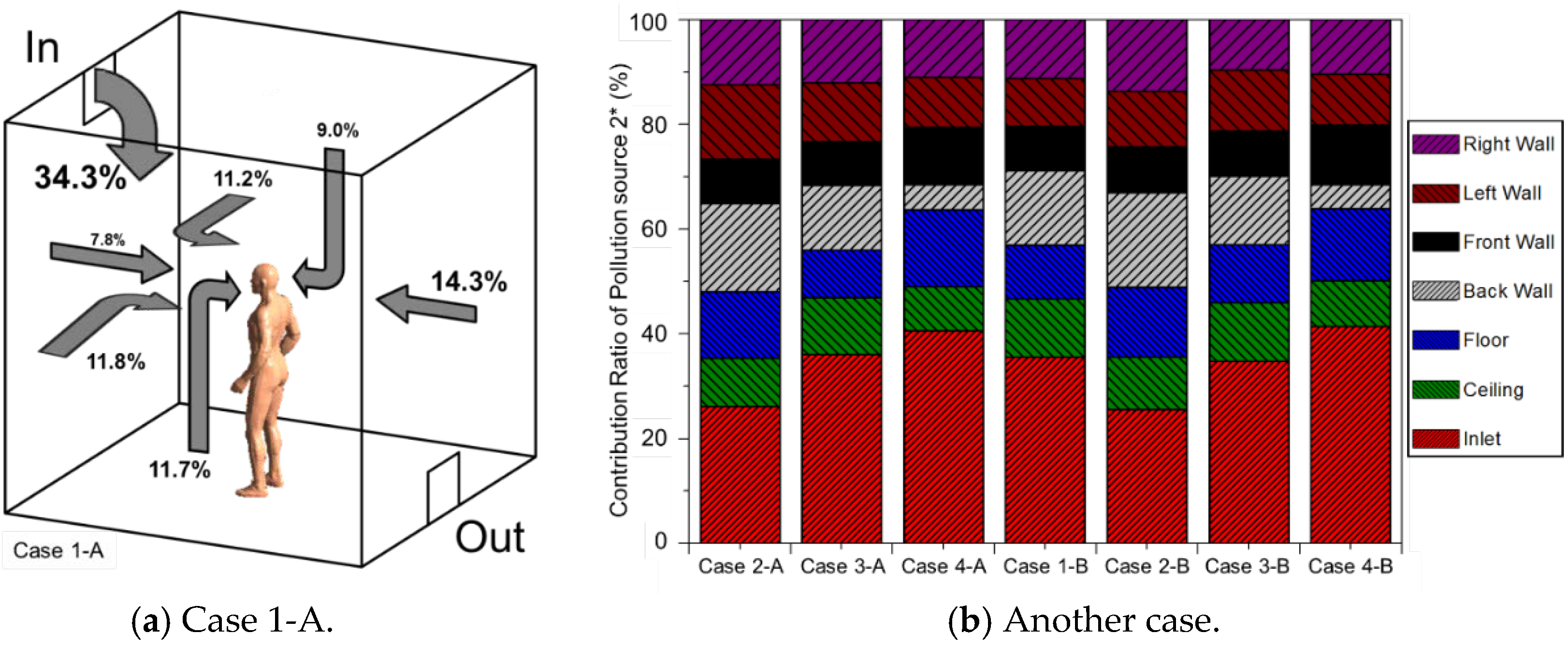
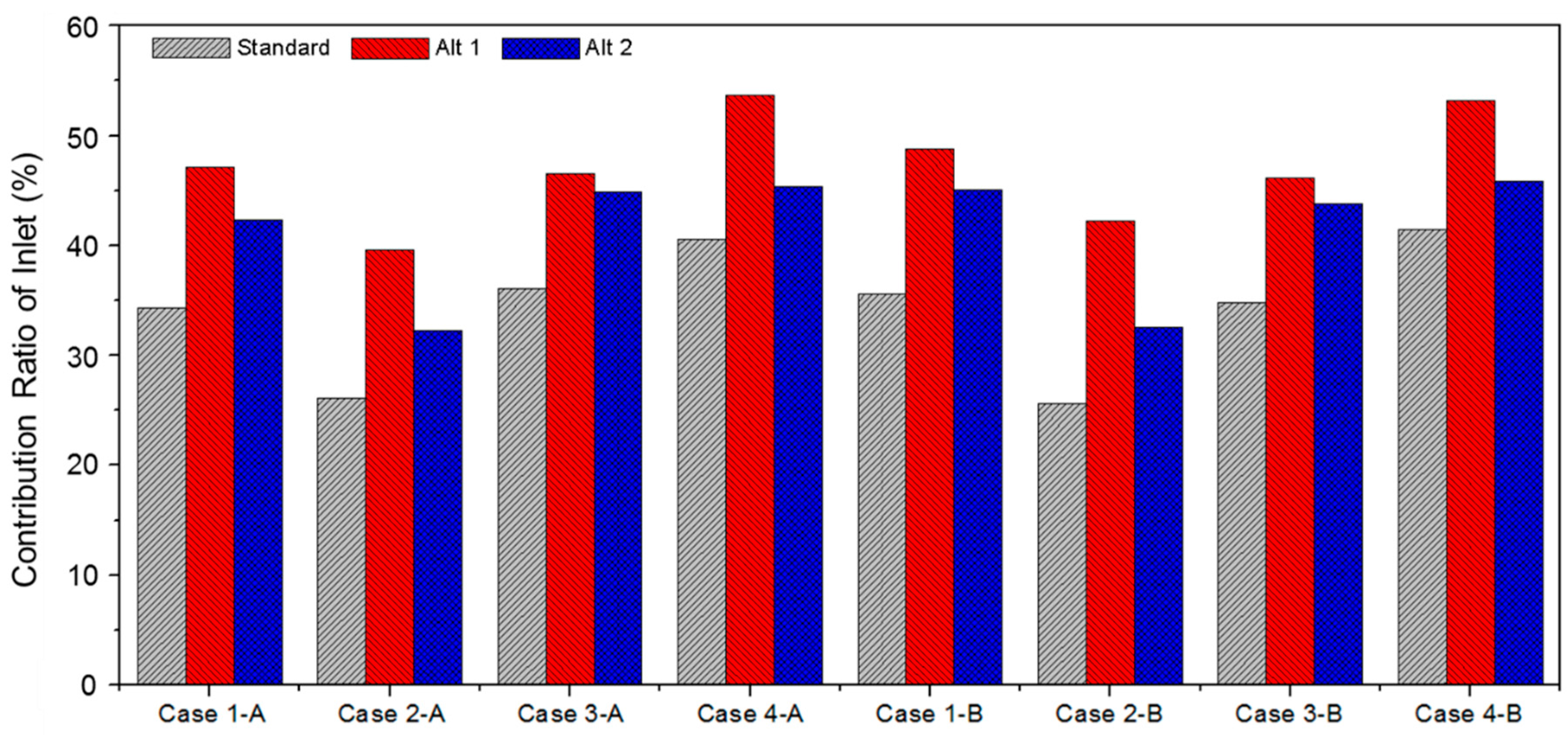
| Supply Gases | Supply Concentration (μg/m3) | Exhaust Concentration (μg/m3) | Sorption Flux (μg/m2·h) | Equivalent Ventilation Rate per Unit Area (m3/h·m2) | Total Sorption Value for Toluene after 7 Days (μg/g) |
|---|---|---|---|---|---|
| Toluene | 280 | 48 | 52 | 1.1 | 9.6 |
| Ethyl benzene | 305 | 55 | 56 | 1.0 | - |
| P-xylene | 104 | 18 | 19 | 1.1 | - |
| Styrene | 300 | 50 | 55 | 1.1 | - |
| Posture | Air Diffuser | |||
|---|---|---|---|---|
| Case 1 | Case 2 | Case 3 | Case 4 | |
| (A) Standing | Case 1-A | Case 2-A | Case 3-A | Case 4-A |
| (B) Sitting | Case 1-B | Case 2-B | Case 3-B | Case 4-B |
| Turbulent Flow Model | RNG k-ε Model |
|---|---|
| Number of Meshes | Around 3,000,000 |
| Inflow Boundary | °C |
| Outflow Boundary | (Mass flow conservation) Flow rate weighting, outlet = 0.99, mouth = 0.01 |
| Wall Boundary | No-slip |
| Breath Boundary | 14.4 L/min (Human standard) |
| Flux Boundary | (Heat transfer rate of person = 33.8 W) |
© 2016 by the authors; licensee MDPI, Basel, Switzerland. This article is an open access article distributed under the terms and conditions of the Creative Commons by Attribution (CC-BY) license (http://creativecommons.org/licenses/by/4.0/).
Share and Cite
Park, S.; Seo, J. Optimum Installation of Sorptive Building Materials Using Contribution Ratio of Pollution Source for Improvement of Indoor Air Quality. Int. J. Environ. Res. Public Health 2016, 13, 396. https://doi.org/10.3390/ijerph13040396
Park S, Seo J. Optimum Installation of Sorptive Building Materials Using Contribution Ratio of Pollution Source for Improvement of Indoor Air Quality. International Journal of Environmental Research and Public Health. 2016; 13(4):396. https://doi.org/10.3390/ijerph13040396
Chicago/Turabian StylePark, Seonghyun, and Janghoo Seo. 2016. "Optimum Installation of Sorptive Building Materials Using Contribution Ratio of Pollution Source for Improvement of Indoor Air Quality" International Journal of Environmental Research and Public Health 13, no. 4: 396. https://doi.org/10.3390/ijerph13040396
APA StylePark, S., & Seo, J. (2016). Optimum Installation of Sorptive Building Materials Using Contribution Ratio of Pollution Source for Improvement of Indoor Air Quality. International Journal of Environmental Research and Public Health, 13(4), 396. https://doi.org/10.3390/ijerph13040396





